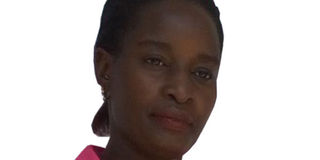Create ministry to empower the youth

In the past 2006, 2011, and 2016 elections, the performance of youth leaders in youth structures has always been questioned and seen to be deteriorating in terms of performance.
In 2016, the Electoral Commission sent out a roadmap for the youth and General Elections in 2016 throughout the country; which involved youth elections for youth structures.
These youth structures include five regional and one female Youth MP; youth council leaders from the village youth council, parish, sub-county/division/municipality/town council, district and to the national youth councils.
Others are female and male local government youth councillors in every sub-county and district; Uganda national students association coupled with youth league and State minister for Youth that emanate from the 1993 National Youth Council Act.
However, despite the existence of these structures, for the 80 per cent Ugandan population as youth; there has not been translation into service delivery as well as fronting issues affecting the youth to ensure that they are worked upon due to existence of weak youth structures that have either been under powered by a given political party, individual; selfish interests; or their disempowerment in lack of a formal salary yet LC3, LC5, RDCs, MPs, up to the President are paid, lack of sub- county & district secretariats (2003 NYCA Amendment); clear roles, and responsibilities, district funding to run the affairs of the youth in Uganda as well as the coordinating umbrella for all these structures; and a counter check committee to evaluate their performance and relevance. The lack of funding makes youth councils disappear immediately after elections.
In the 2017/2018 Budget, Ministry of Gender got Shs12.85 billion, but allocated only Shs2 billion to the department of youth and children’s affairs, which is a total disservice to the majority population in Uganda. While Uganda has sectoral committees, the majority population has not had a Youth parliamentary committee to discuss the youth issues.
Chapter II off the NRM 2016-2021 NRM Manifesto also commits to upholding the democracy where all citizens participate in a free and fair election and maintenance of strong leadership structures.
Congruently, Sec. 2 of the 1993 National Youth Council Act (NYCA) talks about the objectives of the NYC, but does not clearly show the various roles and responsibilities and mandate of the NYC; or if shown, there has not been efforts to popularize these roles through empowering these structures. Sec. 11 of the NYCA talks about funding of the youth councils that come from Central government and District Local governments but which funds are also not clearly indicated. How can government spend Shs500 billion to set up a structure and facilitate it to perform.
Since 2001, political parties, civil society and individuals have tasked government to empower youth structures to ensure youth participation. In 2013, Dr Kizza Besigye said, “You cannot run democracy in a country where youth leaders are devalued.”
During the launch of the 2010 Uganda National Youth Policy and evaluation of Youth Livelihood Programme (YLP), the State minister of Youth and Children’s Affairs, Ms Nakiwala Kiyingi also asked government to empower youth structures for effectiveness of government programmes such as YLP.
In 2016, when Ms Anna Adeke Ebaaju was swearing in after being elected as the National Female Youth MP, in her first speech, she said that she would advocate for the youth to have strong institutions and an independent ministry to be able to streamline the issues of the young people.
Government should set up a Youth Parliamentary Committee, a supervisory body to oversee all youth interventions, and shares from different ministries and government institutions to tap into the unemployed but economically potential majority population.
Ms Namayengo is the project manager of Voice Project under Citizens Coalition for Electoral Democracy in Uganda




